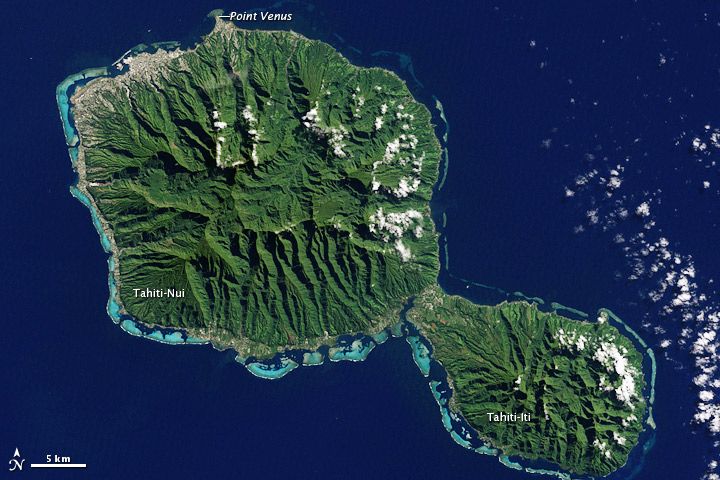
Tahiti's Tropical Paradise Spied from Space

Captain James Cook and the crew of the HMS Endeavour came across the dazzling island of Tahiti in the spring of 1769, camping out on what is now known as Point Venus.
Part of the motivation for the trip was to observe the transit of Venus, which Cook dutifully sketched, in part to help calculate the size of the solar system. (Another such transit of Venus happened last week, the last one for the next 115 years.)
Though the transit of Venus was the stated objective of the British expedition, crew botanist Joseph Banks was likely more interested in Tahiti's plants. Specimens he collected from Tahiti, New Zealand, South America, Australia and Java accounted for roughly 1,300 new species, and his famed collection is now stored at the Natural History Museum in London.
Heavy tropical rains feed Tahiti's plants, the striking verdant green of this image, captured by the Landsat 7 satellite on July 11, 2001.
But the rains have also eroded the islands' mountains, carving deep valleys, some with walls up to 3,280 feet (1,000 meters) tall.
The islands are part of a volcanic chain formed by the northwestward movement of the Pacific Plate over a fixed volcanic hot spot. Tahiti consists of two old volcanoes — Tahiti-Nui in the northwest and Tahiti-Iti in the southeast — linked by an isthmus.
Complementing the rich life on land is the marine life around Tahiti's perimeter. Coral reefs fringe the island, and are thickest on the southern and western sides.
Sign up for the Live Science daily newsletter now
Get the world’s most fascinating discoveries delivered straight to your inbox.
Follow OurAmazingPlanet for the latest in Earth science and exploration news on Twitter @OAPlanet. We're also on Facebook and Google+.












